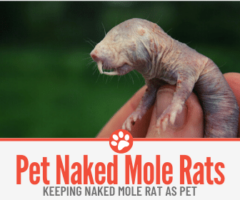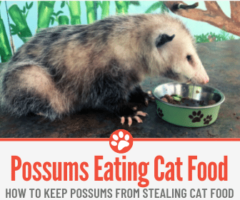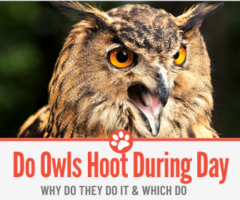 Not everyone wants cats or dogs as pets. For the less conventional owner, moles can feature at the top of the preference list.
Not everyone wants cats or dogs as pets. For the less conventional owner, moles can feature at the top of the preference list.
You might wonder, can you have a mole for a pet? Yes, you can, but you do need to be a little more prepared. Moles in particular, are very sensitive creatures and if not treated carefully, they are – unfortunately – prone to stress and dying.
Mole is a type of rodent, living in burrows deep underground. As long as similar environments to what they have in the wild are replicated at home, you can keep them as pets.
How To Keep a Pet Mole
Moles will make lovely pets if taken care of properly. It’s not hard, just different from what you might imagine a pet usually requires. Here are some tips to make it a success:
Mimic mole’s natural habitat
This is very important, to help reduce stress as a result of the change in their circumstances. Create a den with lots of earth for them to build tunnels.
Their new home should not be sterile, rather dirt in the tunnels is just how they like it. Keep an open entrance for easy exit as well.
Environmental conditions similar to in the wild
Tunnels deep underground are well protected from fluctuating environmental conditions outside and so temperatures, moisture levels and light are kept pretty stable year-round.
Avoid bright sunlight – it can kill moles.
Best to try with young moles and not an adult
Get a mole once it can be weaned from its mother. That way it won’t be used to the outdoors and feel a shock when taken into its new home.
Pet Moles don’t want company
Putting more than one mole together can really stress them out and they will probably fight to the death. Even mothers force their babies out as soon as they wean.
Read on if you are excited and want to know more about these curious creatures.
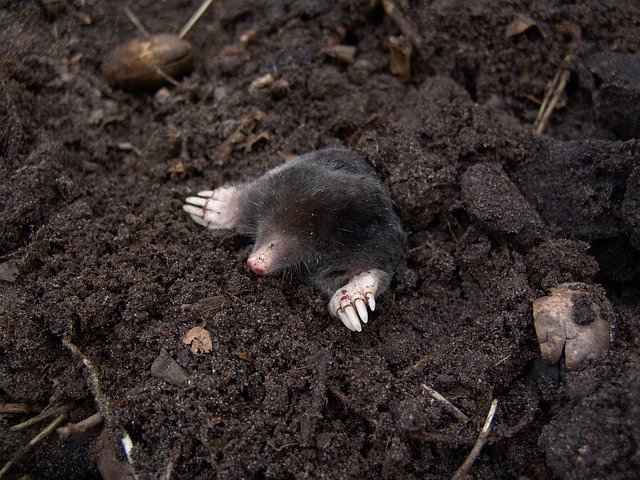
Characteristics of Pet Mole
Moles are about 12 to 16cm long, have dark fur, small eyes and huge paws with massive claws. Unusually, they have a sixth digit on each paw, which is actually an extended wrist bone. This digit has no moving joints, but adds width and strength to the paw. A 6th digit does occur in humans and other animals but is rare and in moles may have been an accidental evolutionary mishap that has been retained due to the added benefit in digging.
Although their forearms and shoulders are very strong, they have a small pelvis and hind legs, making it easier to turn around in confined spaces.
Mole’s eyes are small and protected from dirt during digging by thin membranes. Nostrils sit on the side of the snout to reduce the likelihood of earth getting up the nose and the ears are covered with fur to stop dirt getting inside. Whiskers are used in navigation.
Many different types of glands can be found on the animal. These are probably used to emit scents to help communication with other moles or animals.
The fur on a mole is very soft and, surprisingly, does not easily let dirt stick, so the animal is generally clean.
Being underground and away from fresh air means that moles have adapted to tolerating higher levels of carbon dioxide.
Moles tend to live for about 6 years, but this may well be a lot shorter in captivity if they are not treated with care.
Species of Different Pet moles
Moles are related to shrews. There are many different types of moles, scattered across the globe. The East American mole and the hairy-tailed mole are those best known in North America, with the Eastern mole most common in the UK and Europe. The Golden mole is found in Southern Africa.
Star-nosed moles, also present in the USA, are well known because of their unusual appearance. They have 22 tentacles/rays at the tip of their snout, which are packed full of sensory receptors. The star-nosed mole is the fastest mammalian forager. It can identify and eat food in less than two tenths of a second.
Natural Habitat of Pet moles
Moles are mainly found in Europe and North America. They dig deep tunnels underground, creating environments with pretty stable climates. In winter months, when temperatures drop, they will dig deeper to keep away from the cold.
Moles can swim but don’t like being damp. The exceptions are the Eastern Mole, which particularly enjoys swimming, and the star-nosed mole, which live near rivers, swamps or marshes. So, if you have this species it is advisable to build one tunnel in the burrow with its entrance leading to water.
Sense of sight, smell and hearing
Although many people think moles are blind, they can actually see, just very poorly. They are colour blind and primarily see light, dark and movement. Considering where they live is dark you can understand why nature did not see the need to bestow them with 20:20 vision.
To compensate, moles have a fantastic sense of smell and use that, as well as touch, to get around.
They smell in stereo. That is, each nostril can take in odour particles and process them independently, sending different signals to the brain. This helps identify where a smell is coming from and what it is, making it easier to find food and avoid enemies.
The star-nosed mole can even smell with its nose under water.
Tunnelling
Moles dig with their claws, pushing soil underneath and behind them. Once a pile of loose earth has built up it will push it all the way to the end of a tunnel and expel it outside. Their bodies can twist 45 degrees, helping with the action of pushing debris away from the direction of digging.
A mole’s domain will span about 1/5th of an acre, and although it won’t be shared with another mole, it can often be positioned right next to another burrow.
Remember, you will continually need to provide zones that your pet mole can dig in to keep it engaged. It doesn’t just dig tunnels and then sit back and relax.
What to Feed your Pet Mole
As insectivores, moles eat slugs, worms, millipedes, snails, larvae, and so on; anything you find creeping around in the earth. Because of its fondness of water, the star-nosed mole will add some water animals, like minnows, to its repertoire.
They are real foragers and will eat more than their own body weight in a day. Active during the day, as well as at night, moles on occasion do come out above ground, but only in darkness.
Sociability and behaviours
Moles are not sociable in any way. They only live together for a brief time to mate and being with other animals stresses them out. They have exceptional senses and can pick up that another mole is nearby at quite a distance. They will aggressively head it off before it progresses further down its terrain, getting into fights, which often result in death.
These are very nervous creatures. If stressed it is quite possible that they will die within a couple of days. Anxiety stops them eating properly.
Because of their sensitive nature it might be best to choose injured ones, that would otherwise die in the wild, as a pet.
Breeding of Pet Moles
Moles follow the cycles of nature, breeding in spring, typically between February and June. The gestation phase lasts 42 days and two to five pups are born in a litter.
The boars (the males) dig deep holes, creating a burrow for the new family and then go off to search for a sow (the female). The relationship doesn’t last long after that – mating and then leaving within hours of the babies being born.
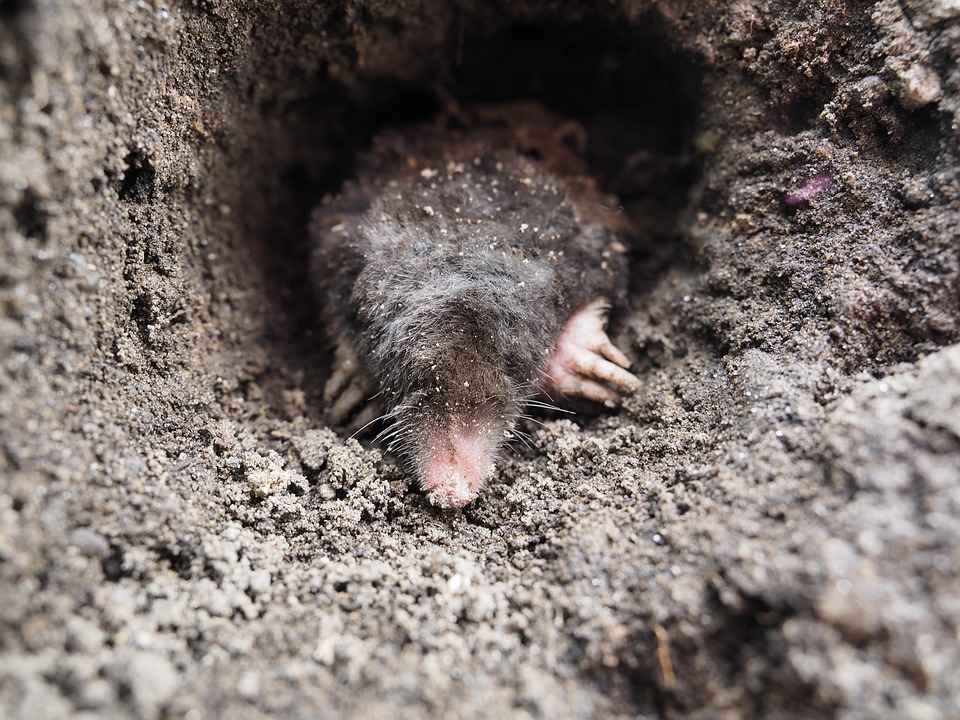
Interaction with humans
In the Middle Ages in England, UK, during times when women were burned on the stake if suspected of having evil powers, owning a mole as a pet was not a good idea. It could put you in the vulnerable position of being assumed to be a witch, and promptly being put to death.
Nowadays we don’t feel as strongly about moles or witches, but most people still regard them as vermin that destroy beautiful garden lawns. In actual fact, moles make up an important part of our ecosystem. They rework the soil, eat insects and are a source of food to larger carnivores.

